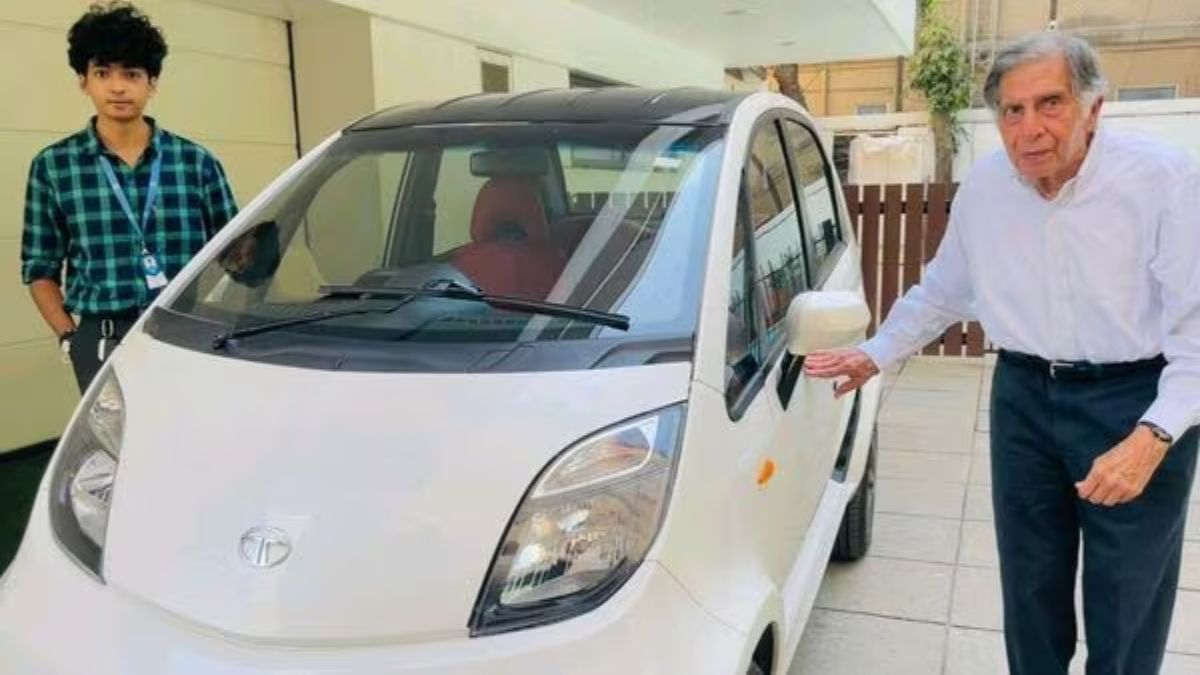Ratan Tata’s vision of creating the Tata Nano, often dubbed “the world’s cheapest car,” is a compelling narrative that intertwines innovation, ambition, and humility. Launched in 2009 with a price tag of just ₹100,000 (approximately $2,500), the Nano was designed to offer Indian families a safer and more affordable alternative to two-wheelers. However, the journey of the Nano was fraught with challenges that ultimately became a lesson in humility for all involved.
The Vision Behind the Nano
The inception of the Tata Nano can be traced back to Ratan Tata’s deep concern for Indian families who relied on scooters for transportation. Observing families precariously balancing on motorcycles—often with children sandwiched between parents—Tata envisioned a vehicle that would provide safety and comfort. His goal was to create a “people’s car” that could cater to the burgeoning middle class in India.
The project began in the early 2000s, following the success of the Tata Ace, a low-cost commercial vehicle. Ratan Tata challenged his team to develop an affordable passenger car that could be manufactured at an unprecedented low cost. The project was ambitious; it aimed to break traditional automotive design norms while ensuring safety and quality.
Design and Development
The development of the Nano involved a dedicated team of nearly 500 engineers and designers over four years. They employed innovative techniques to minimize costs without compromising safety. Key features included:
- Simplified Design: The Nano had only essential features, such as one windshield wiper and three lug nuts per wheel, which helped keep production costs low.
- Lightweight Materials: The car was designed to be lightweight, tipping the scales at just 600 kilograms, which contributed to its fuel efficiency.
- Central Instrument Cluster: This design choice allowed for a more compact dashboard layout, reducing manufacturing complexity.
Despite these innovations, the Nano faced significant hurdles during its launch phase.
Launch and Initial Reception
The Tata Nano was unveiled at the 2008 Auto Expo in New Delhi amidst much fanfare. It was marketed as “the people’s car,” aiming to revolutionize transportation for millions. However, the excitement was short-lived.Several factors contributed to its rocky start:
- Factory Relocation: Initially planned for Singur in West Bengal, protests against land acquisition forced Tata Motors to relocate production to Sanand in Gujarat. This delay affected initial sales and brand momentum.
- Safety Concerns: Early reports of Nanos catching fire due to mechanical issues raised alarms about safety. These incidents tarnished the car’s image and led many potential buyers to question its reliability.
- Marketing Missteps: The branding strategy labeled it as “the cheapest car,” inadvertently creating a stigma around it being a “poor man’s vehicle.” Ratan Tata later admitted that this marketing approach was misguided; he believed it should have been positioned as an affordable and safe alternative for two-wheeler owners rather than emphasizing its low price.
Decline in Sales
Despite initial enthusiasm and high booking numbers, sales began to plummet after its launch. By 2017, actual sales figures dwindled significantly, with only 7,591 units sold in the model year 2016-2017. The perception of being a low-quality vehicle haunted its reputation.
Ratan Tata’s reflections on the Nano project reveal his humility and willingness to learn from mistakes. He acknowledged that while the idea had immense potential, poor marketing decisions had overshadowed its benefits.
Legacy and Lessons Learned
The story of the Tata Nano serves as a powerful reminder that innovation must be accompanied by thoughtful execution and marketing strategies. While it failed to achieve commercial success as anticipated, the project highlighted several key lessons:
- Understanding Market Perception: Branding is crucial; how a product is perceived can significantly impact its success.
- Consumer Education: Educating potential buyers about product benefits is vital, especially when introducing something revolutionary.
- Resilience in Failure: Ratan Tata’s commitment to learning from setbacks reflects a broader lesson about resilience in business.
Conclusion
The Tata Nano may not have achieved the success Ratan Tata envisioned, but it remains an important chapter in automotive history. It exemplifies ambition tempered by humility—a reminder that even well-intentioned innovations can falter without proper execution. Ratan Tata’s journey with the Nano continues to inspire entrepreneurs and innovators worldwide, emphasizing that every failure carries valuable lessons for future endeavors.


